Research Interest Statement Samples
-
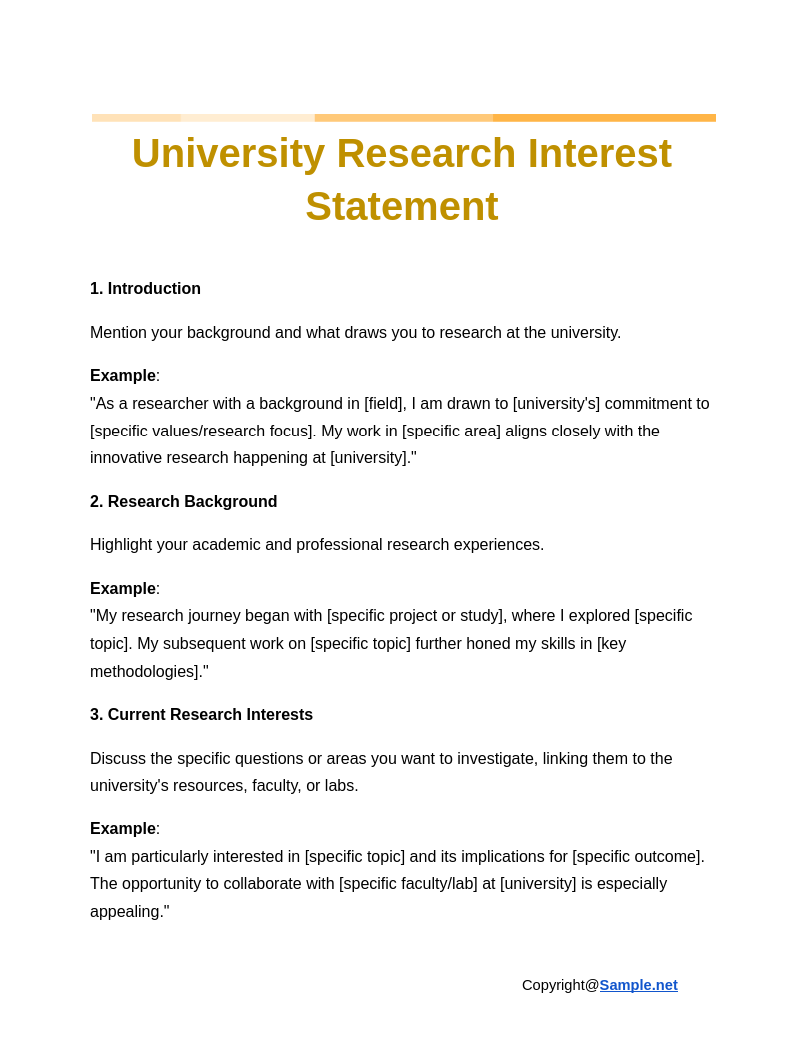
University Research Interest Statement
download now -
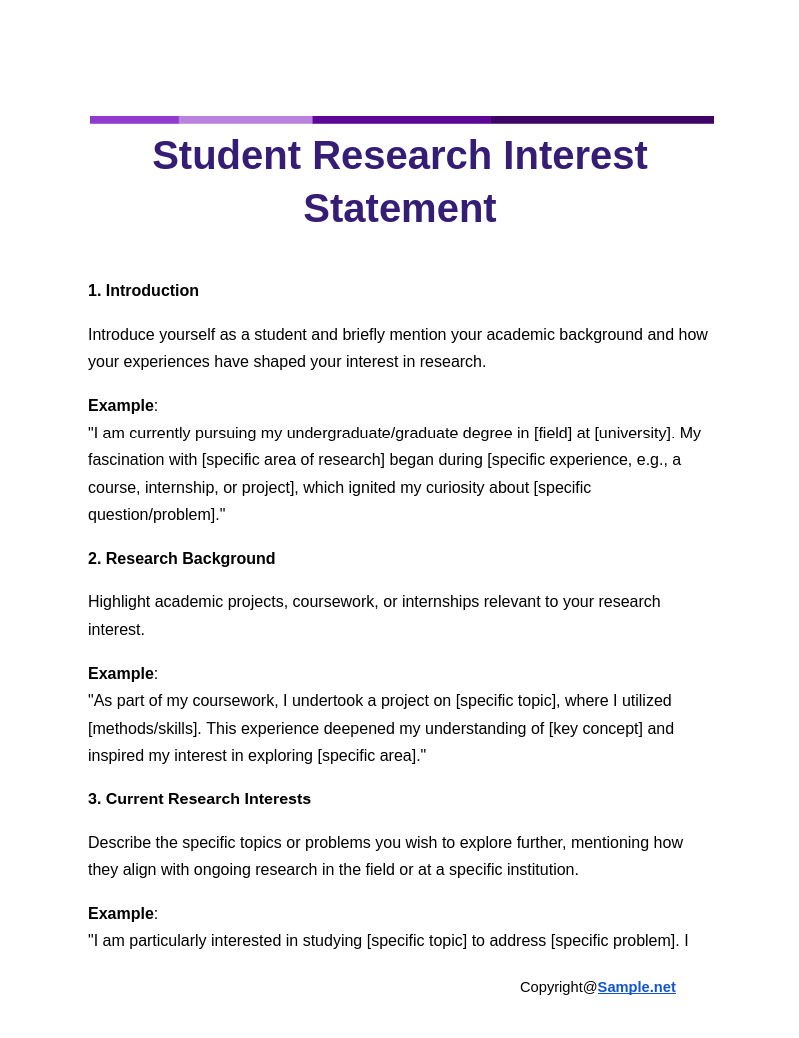
Student Research Interest Statement
download now -
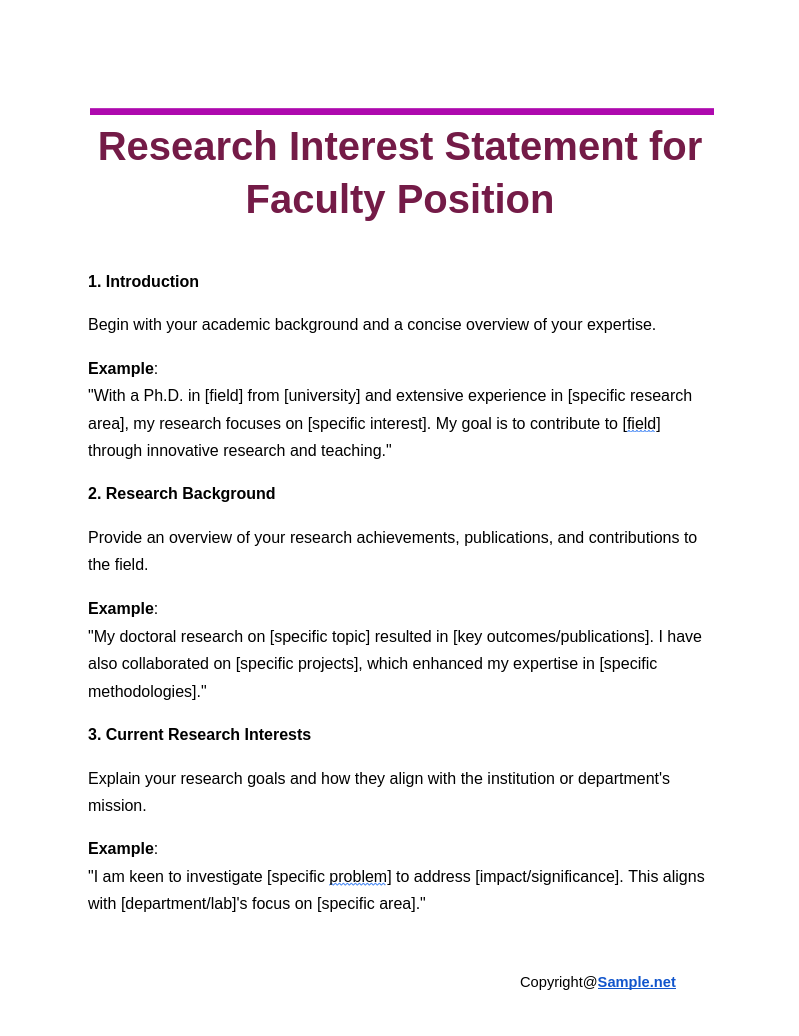
Research Interest Statement for Faculty Position
download now -
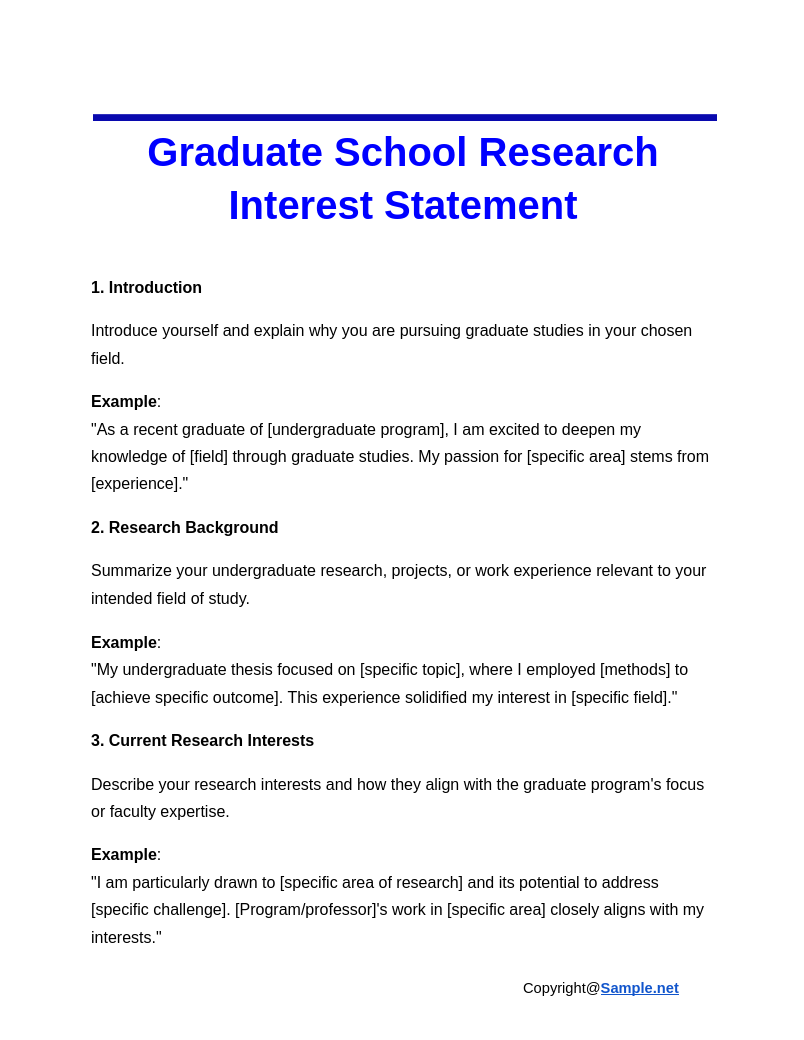
Graduate School Research Interest Statement
download now -
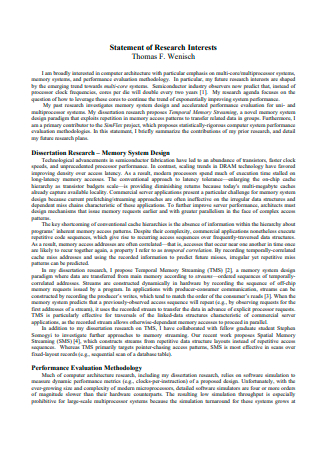
Research Interest Statement Template
download now -
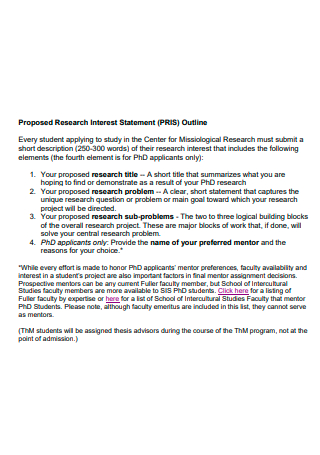
Research Interest Statement Outline
download now -
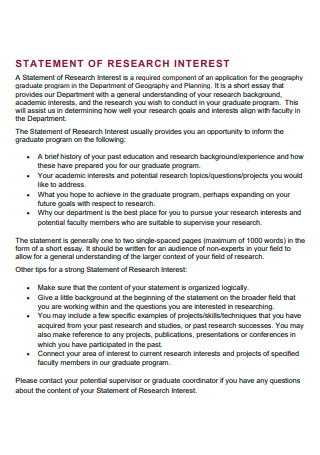
Basic Research Interest Statement
download now -

Research Interest Statement Example
download now -
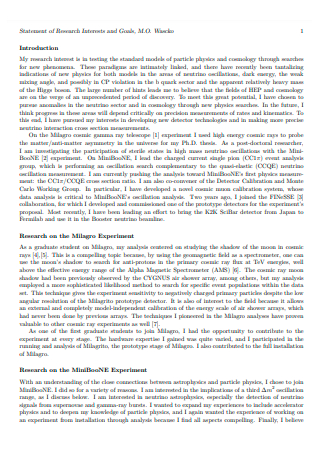
Research Interest and Goals Statement
download now -
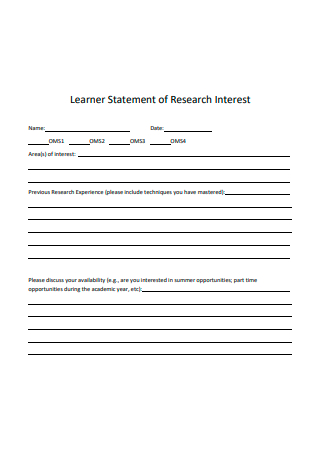
Research Interest Learner Statement
download now -
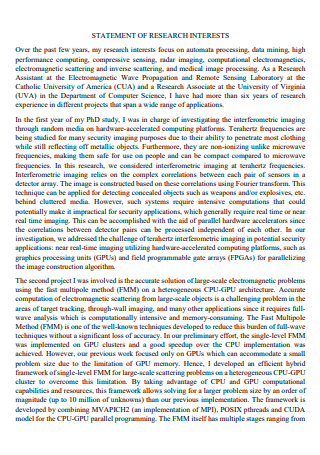
Research Interest Statement in PDF
download now -
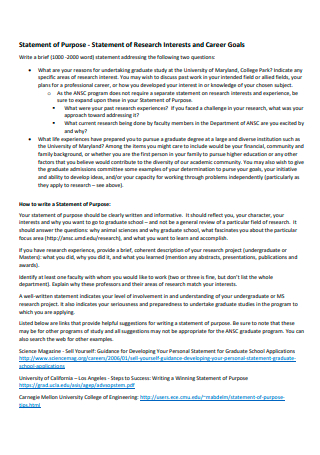
Research Interest and Career Goals Statement
download now -
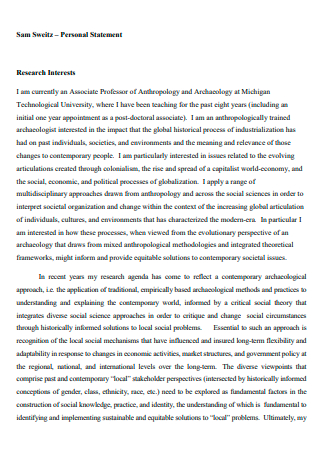
Research Interest Personal Statement
download now -
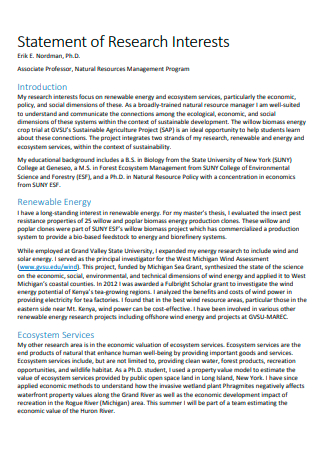
Standard Research Interest Statement
download now -
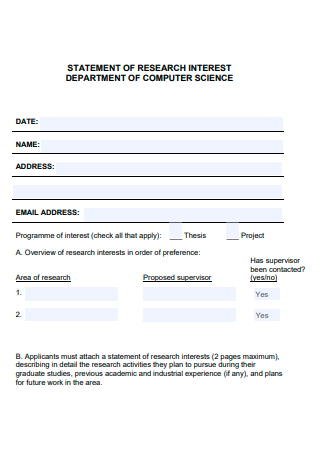
Department of Computer Science Research Interest Statement
download now -
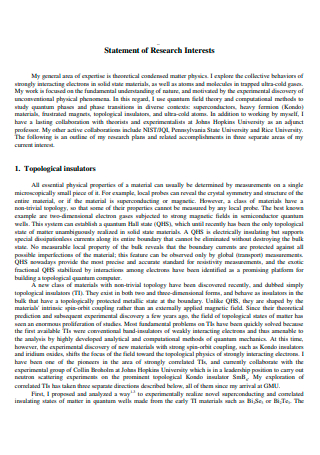
Formal Research Interest Statement
download now -
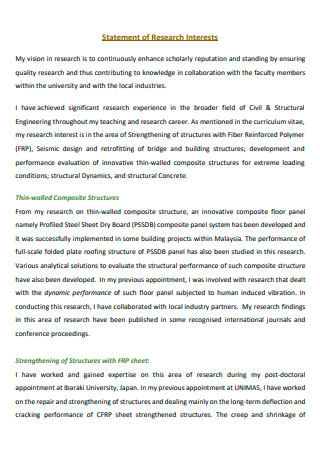
Draft Research Interest Statement
download now -

Research Interest and Vision Statement
download now -
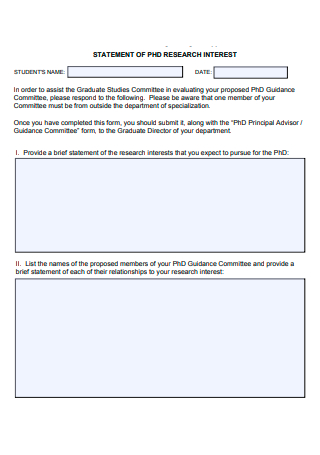
Printable Research Interest Statement
download now -
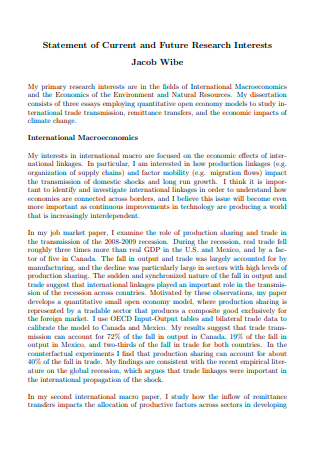
Current and Future Research Interest Statement
download now -
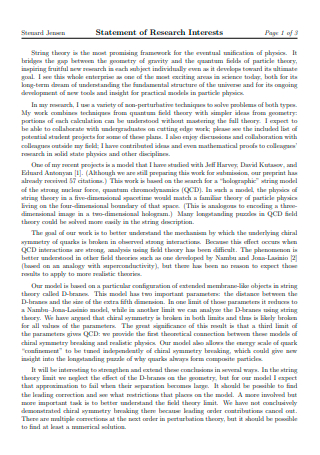
Sample Research Interest Statement
download now -
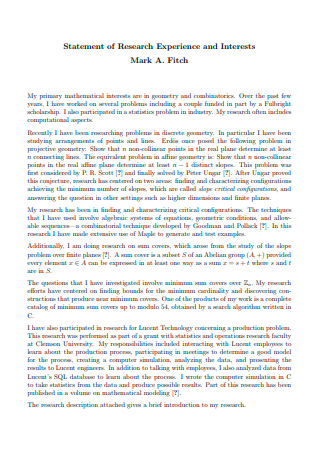
Research Experience and Interest Statement
download now -
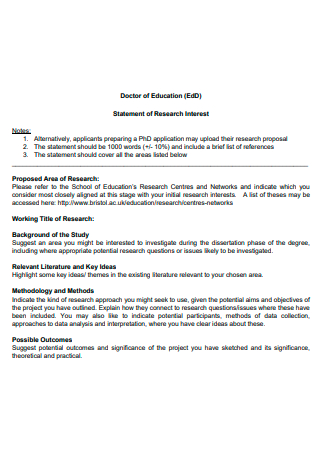
Doctor of Education Research Interest Statement
download now -
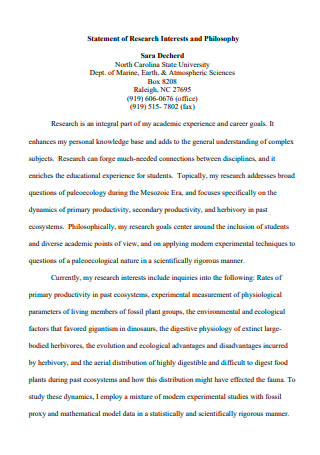
Research Interest and Philosophy Statement
download now -
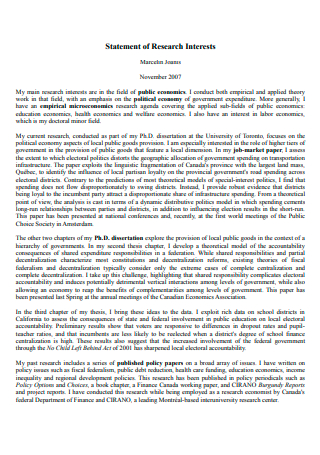
Simple Research Interest Statement
download now -
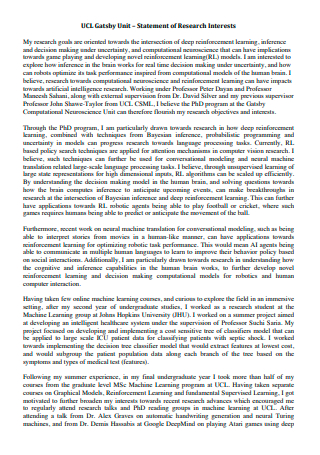
Research Interest Unit Statement
download now -
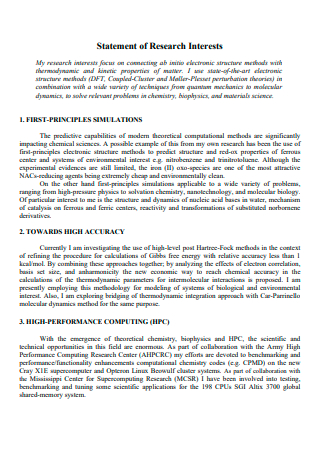
Research Interest Statement Format
download now -
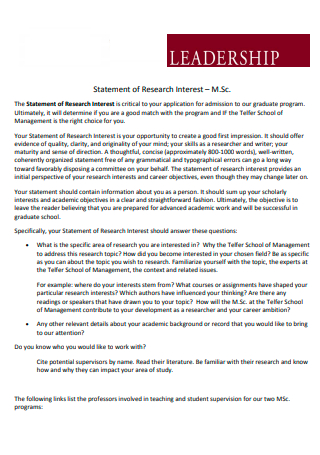
Leadership Research Interest Statement
download now
FREE Research Interest Statement s to Download
Research Interest Statement Format
Research Interest Statement Samples
What is a Research Interest Statement?
Basic Elements of the Research Interest Statement
Purpose of the Research Interest Statement
How to Create a Research Interest Statement
FAQs
How to make an engaging research interest statement?
What are some examples of research interest statements?
How long should a research interest statement be?
Does the research interest statement need references?
What should I avoid when writing a research interest statement?
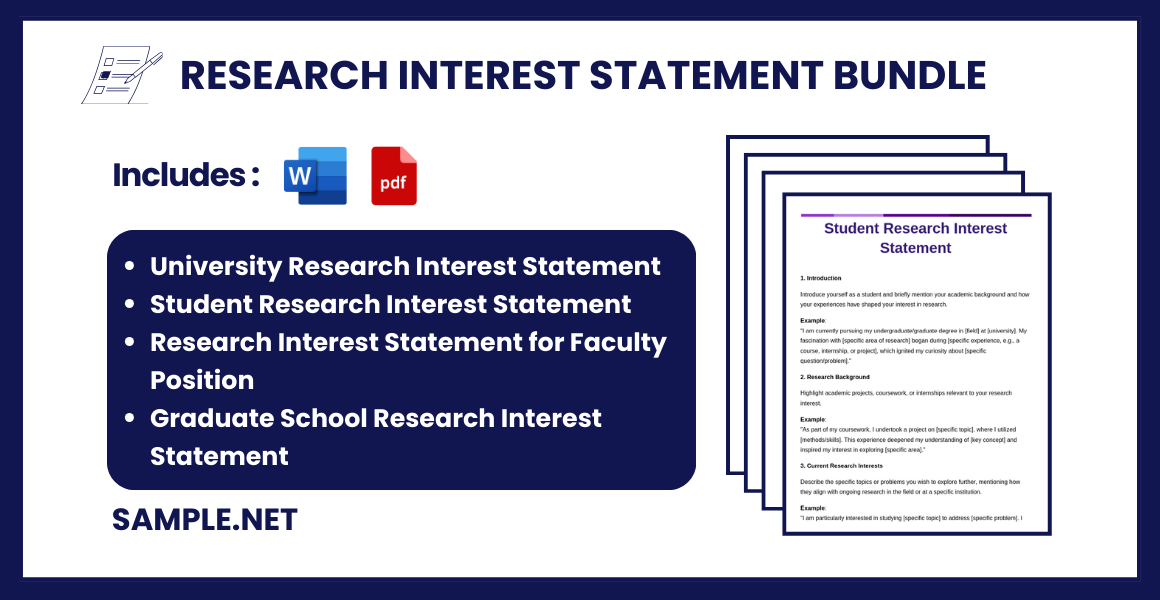
Download Research Interest Statement Bundle
Research Interest Statement Format
1. Introduction
- Briefly introduce yourself, your background, and your interest in the research area.
- Mention your current academic/professional standing and the field of study.
Example:
“As a graduate of [your program], my interest in [specific research field] stems from [specific experience or inspiration]. My academic journey and professional experiences have equipped me with a deep understanding of [specific skills/knowledge].”
2. Research Background
- Provide a summary of your previous research or academic projects.
- Highlight the key outcomes, methodologies, and relevance of your work to your current interests.
- If applicable, mention collaborations or publications.
Example:
“My previous research in [specific topic] focused on [specific project]. Using [methods], we achieved [results]. This experience developed my skills in [key skills] and deepened my curiosity in [specific aspect].”
3. Current Research Interests
- Clearly outline your current research interests and how they align with the program or faculty you are applying to.
- Identify specific problems or questions you want to explore.
- Mention how these interests align with recent trends or developments in the field.
Example:
“My primary research interest lies in [specific topic/field], particularly [specific aspect]. I aim to explore [key question/problem] to address [significance/impact]. This aligns closely with [specific professor/research group’s] work on [specific topic].”
4. Future Goals
- Discuss your short-term and long-term research goals.
- Explain how your proposed research contributes to the field and broader societal impact.
- Highlight how the program or institution supports your aspirations.
Example:
“In the future, I aspire to contribute to [specific outcome/field development]. I am particularly interested in [specific long-term goal], which aligns with [program/university resources or opportunities].”
5. Closing Statement
- Reaffirm your enthusiasm and readiness for the opportunity.
- Mention your eagerness to contribute to and learn from the program or institution.
Example:
“I am excited about the opportunity to collaborate with [specific professor/research group] at [university]. I am confident that my skills and experiences will allow me to make meaningful contributions while expanding my expertise.”
What is a Research Interest Statement?
A Research Interest Statement is a concise document articulating an individual’s academic focus, research background, and future goals in a specific area of study. It is often submitted as part of applications for academic programs, research positions, or grants, highlighting the alignment between the applicant’s interests and the institution’s or program’s objectives. You can also see more on Brief Research Statement.
Basic Elements of the Research Interest Statement
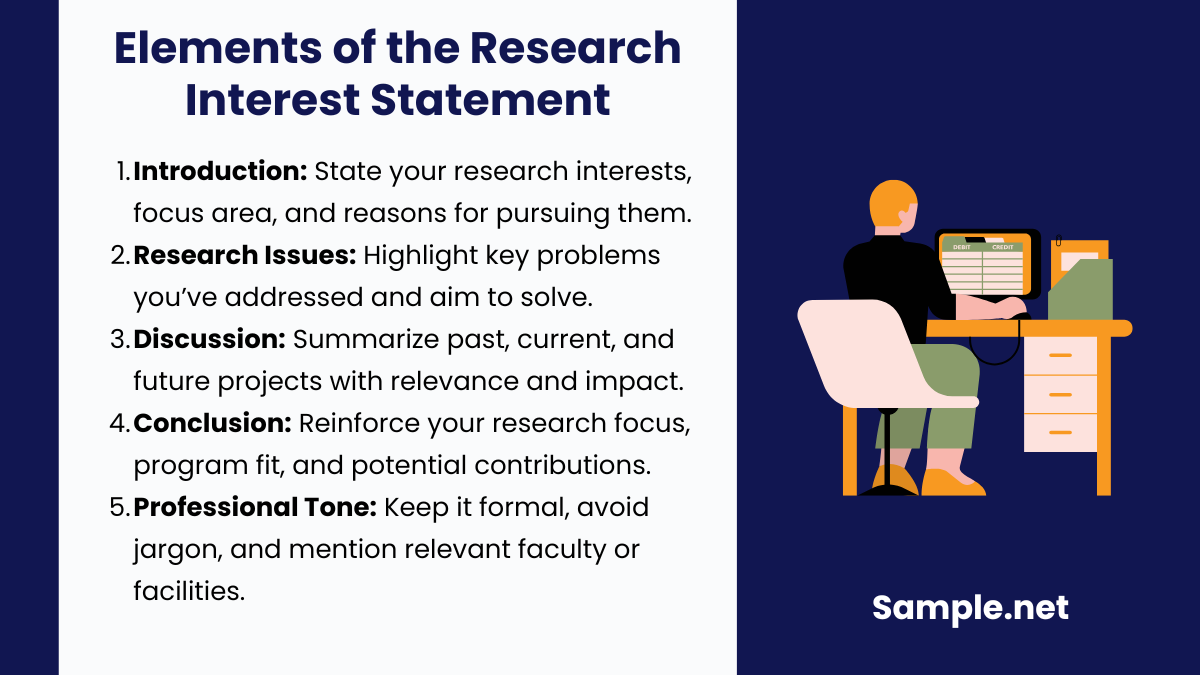
Structuring an impeccable and strong research interest statement is fundamental so that you are able to draw the attention of the readers of your research statement such as the admission committee, school administrators, and many others in your research goals and objectives. Also, it is an important document to supplement your employment application and to help you get your preferred faculty position. Take note of the basic elements of the research interest statement.
Purpose of the Research Interest Statement
1. To articulate academic and professional goals in research.
2. To demonstrate expertise and relevance to a program or faculty.
3. To outline past research experiences and their impact.
4. To highlight the alignment between your interests and institutional objectives.
5. To establish your credibility and potential for future contributions. You can also see more on Research Mission Statement.
How to Create a Research Interest Statement
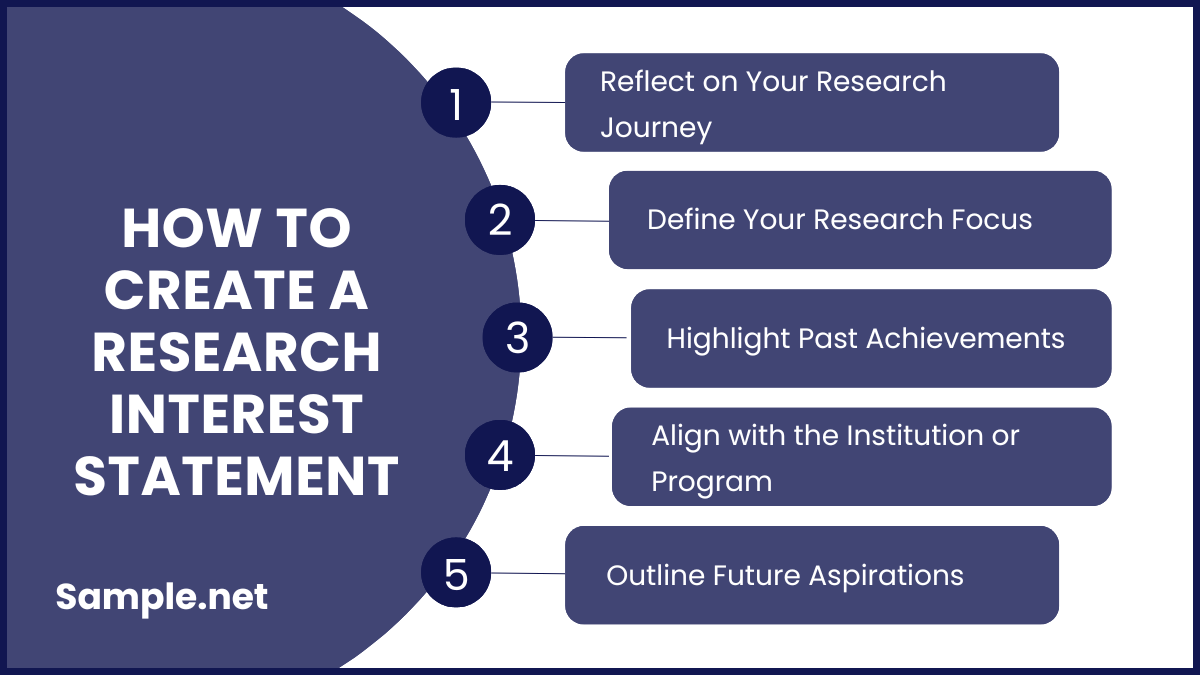
Step 1: Reflect on Your Research Journey
Begin by reviewing your academic and research background. Identify key experiences that inspired your interest in a specific field. Highlight significant projects or courses that shaped your curiosity and explain how they connect to your current research direction. This sets the foundation for your statement.
Step 2: Define Your Research Focus
Clearly describe your research interests and objectives. Explain why this area matters, its significance in the broader field, and the challenges or questions you aim to address. Be specific, showcasing your understanding of the subject and its implications. You can also see more on Research Problem Statement.
Step 3: Highlight Past Achievements
Detail your previous research experiences, including methodologies, outcomes, and any publications or presentations. Emphasize how these achievements prepared you for further research and demonstrate your technical expertise.
Step 4: Align with the Institution or Program
Research the target institution or program thoroughly. Identify how their faculty, resources, or ongoing projects align with your goals. Explain how you can contribute to their research community and benefit from their expertise. You can also see more on Statement Of Purpose.
Step 5: Outline Future Aspirations
Articulate your long-term research goals, emphasizing their impact and relevance. Describe how your work could address pressing issues or advance the field. Link these aspirations to the resources and opportunities provided by the institution.
A research interest statement is more than a formality—it’s a chance to articulate your research vision and connect with an academic community. By presenting your past, present, and future research plans in a structured, engaging way, you not only showcase your capabilities but also your passion and potential for impactful contributions. A compelling statement can inspire confidence and open doors to exciting academic opportunities. You can also see more on University Statement.
FAQs
First, you need to write about how your interest in research studies started as you describe your research goals and why you are still interested in them. Tell a memorable and thought-provoking story about your research interests to catch the attention of your reader. Show any worthwhile recognition you received like awards, grants, and presentations.
Some examples of research interest statements are research interest and goals statement, research interest personal statement, department of computer science research interest statement, research interest and vision statement, current and future research interest statement, doctor of education research interest statement, research contribution statement of interest, and leadership research interest statement.
A research interest statement usually has 500 to 1,000 words. This document takes more than a few pages to highlight your point. Admission committees typically read hundreds of research interest statements and they are mostly looking for compelling research statements that have 1-2 pages. You can also see more on Artist Research Statement.
Yes. The reader of your research interest statement for a faculty job must be informed on how your research work fits into the bigger area of research in a specific field. So, it is important to include citations so that the reader will think that you really understand citation ethics.
How to make an engaging research interest statement?
What are some examples of research interest statements?
How long should a research interest statement be?
Does the research interest statement need references?
What should I avoid when writing a research interest statement?
Avoid vague language, excessive technical jargon, and generic statements. Be specific, concise, and focused, ensuring every sentence adds value. You can also see more on Research Information Sheet.
